Combination of vitamin D and photodynamic therapy enhances immune responses in murine models of squamous cell skin cancer
- PMID: 38281610
- PMCID: PMC11197882
- DOI: 10.1016/j.pdpdt.2024.103983
Combination of vitamin D and photodynamic therapy enhances immune responses in murine models of squamous cell skin cancer
Abstract
Improved treatment outcomes for non-melanoma skin cancers can be achieved if Vitamin D (Vit D) is used as a neoadjuvant prior to photodynamic therapy (PDT). However, the mechanisms for this effect are unclear. Vit D elevates protoporphyrin (PpIX) levels within tumor cells, but also exerts immune-modulatory effects. Here, two murine models, UVB-induced actinic keratoses (AK) and human squamous cell carcinoma (A431) xenografts, were used to analyze the time course of local and systemic immune responses after PDT ± Vit D. Fluorescence immunohistochemistry of tissues and flow analysis (FACS) of blood were employed. In tissue, damage-associated molecular patterns (DAMPs) were increased, and infiltration of neutrophils (Ly6G+), macrophages (F4/80+), and dendritic cells (CD11c+) were observed. In most cases, Vit D alone or PDT alone increased cell recruitment, but Vit D + PDT showed even greater recruitment effects. Similarly for T cells, increased infiltration of total (CD3+), cytotoxic (CD8+) and regulatory (FoxP3+) T-cells was observed after Vit D or PDT, but the increase was even greater with the combination. FACS analysis revealed a variety of interesting changes in circulating immune cell levels. In particular, neutrophils decreased in the blood after Vit D, consistent with migration of neutrophils into AK lesions. Levels of cells expressing the PD-1+ checkpoint receptor were reduced in AKs following Vit D, potentially counteracting PD-1+ elevations seen after PDT alone. In summary, Vit D and ALA-PDT, two treatments with individual immunogenic effects, may be advantageous in combination to improve treatment efficacy and management of AK in the dermatology clinic.
Keywords: Immune response; Murine model; Non-melanoma skin cancer; Photodynamic therapy; Vitamin D.
Copyright © 2024. Published by Elsevier B.V.
Conflict of interest statement
Declarations of competing interest None.
Figures

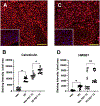
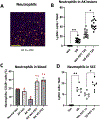
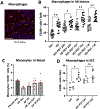
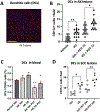
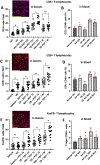

References
-
- Rogers HW, Weinstock MA, Feldman SR, Coldiron BM, Incidence estimate of nonmelanoma skin cancer (keratinocyte carcinomas) in the U.S. population, 2012, JAMA Dermatol. 151 (10) (2015) 1081–1086. - PubMed
-
- Siegel RL, Miller KD, Wagle NS, Jemal A, Cancer statistics, 2023, CA Cancer J. Clin 73 (1) (2023) 17–48. - PubMed
-
- Ziegler A, Jonason AS, Leffell DJ, Simon JA, Sharma HW, Kimmelman J, Remington L, Jacks T, Brash DE, Sunburn and p53 in the onset of skin cancer, Nature 372 (6508) (1994) 773–776. - PubMed
-
- Brash DE, Sunlight and the onset of skin cancer, Trends Genet. 13 (10) (1997) 410–414. TIG. - PubMed
-
- Bowden GT, Prevention of non-melanoma skin cancer by targeting ultraviolet-B-light signalling, Nat. Rev. Cancer 4 (1) (2004) 23–35. - PubMed
MeSH terms
Substances
Grants and funding
LinkOut - more resources
Full Text Sources
Medical
Research Materials

